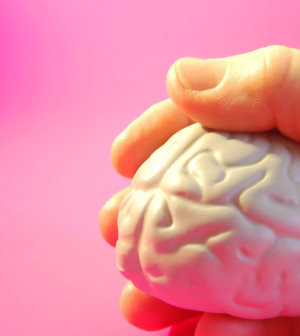- Navigating Your Midlife Crisis: Embracing New Possibilities
- City Raccoons Showing Signs of Domestication
- Mapping the Exposome: Science Broadens Focus to Environmental Disease Triggers
- One Week Less on Social Media Linked to Better Mental Health
- Your Brain Changes in Stages as You Age, Study Finds
- Some Suicide Victims Show No Typical Warning Signs, Study Finds
- ByHeart Formula Faces Lawsuits After Babies Sickened With Botulism
- Switch to Vegan Diet Could Cut Your Greenhouse Gas Emissions in Half
- Regular Bedtime Does Wonders for Blood Pressure
- Dining Alone Could Mean Worse Nutrition for Seniors
Babies Work Specific Brain Areas to Imitate People


THURSDAY, Oct. 31Babies imitate other people to learn how to do things, and now researchers say they’ve pinpointed just how infants’ brains work during that process.
Copying others is a vital learning tool for babies, who often will observe how other people do things — for example, guiding a spoon to the mouth — and then imitate those body movements.
This study is the first to identify specific brain activation patterns in babies when watching an adult perform tasks with different parts of the body, according to the authors of the study, which was published online Oct. 30 in the journal PLoS One.
Seventy 14-month-old infants were fitted with caps with embedded sensors that detected brain activity in regions of the cortex that respond to movement or touch of the feet and hands. The babies sat on a parent’s lap and watched as a researcher touched a toy placed on a low table between the baby and the researcher.
When the researcher used her hand to touch the toy, the hand area of the infants’ brains showed increased activity. When the researcher used her foot to touch the toy, the foot area of the infants’ brains showed increased activity.
“Babies are exquisitely careful people-watchers, and they’re primed to learn from others,” study co-author Andrew Meltzoff, co-director of the Institute for Learning and Brain Sciences at the University of Washington, said in a university news release. “Now we see that when babies watch someone else, it activates their own brains. This study is a first step in understanding the neuroscience of how babies learn through imitation.”
“The reason this is exciting is that it gives insight into a crucial aspect of imitation,” study co-author Peter Marshall, an associate psychology professor at Temple University, said in the news release.
“To imitate the action of another person, babies first need to register what body part the other person used,” Marshall said. “Our findings suggest that babies do this in a particular way by mapping the actions of the other person onto their own body.”
More information
Zero to Three has more about infants’ brain development.
Source: HealthDay
Copyright © 2025 HealthDay. All rights reserved.










